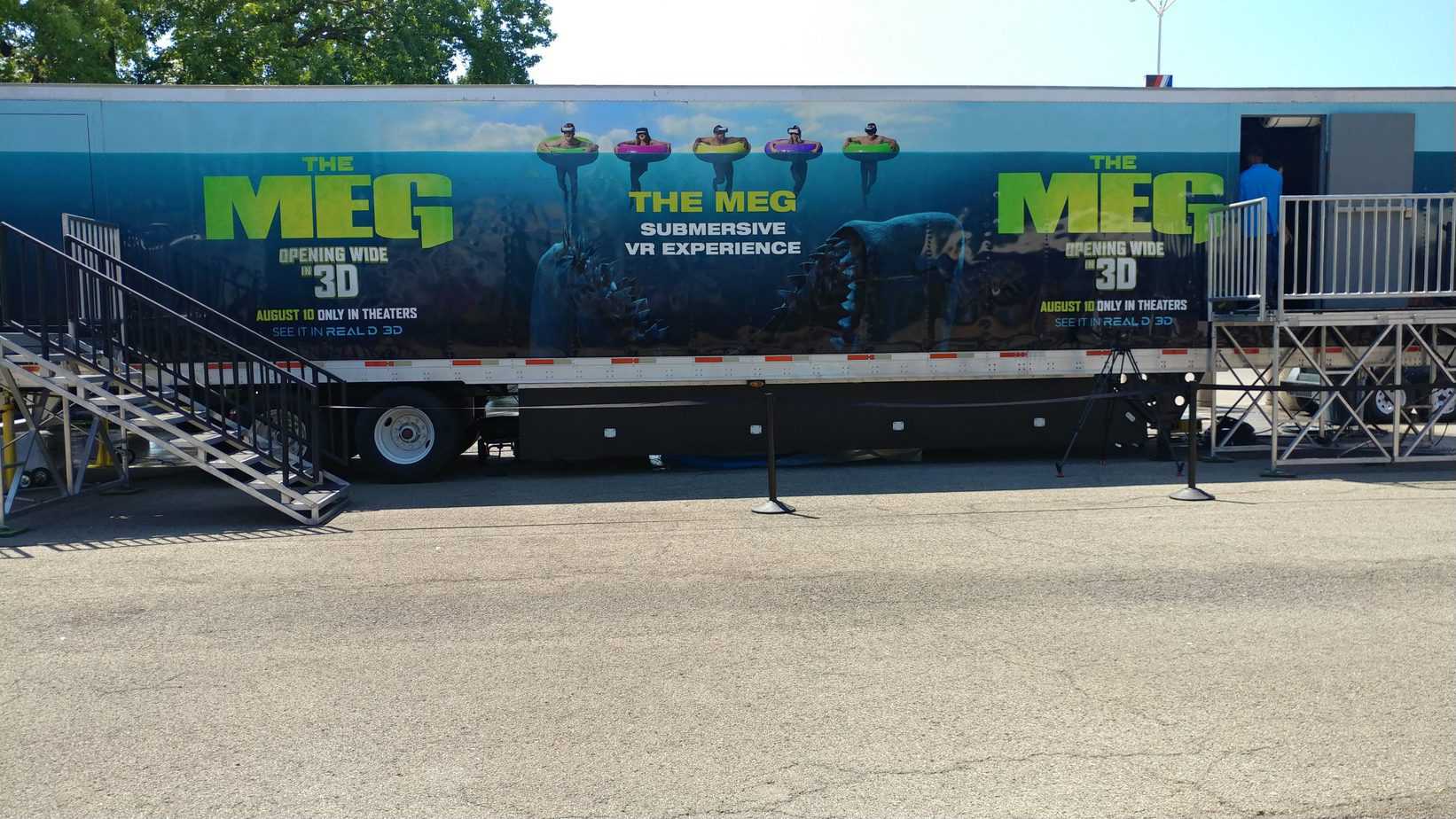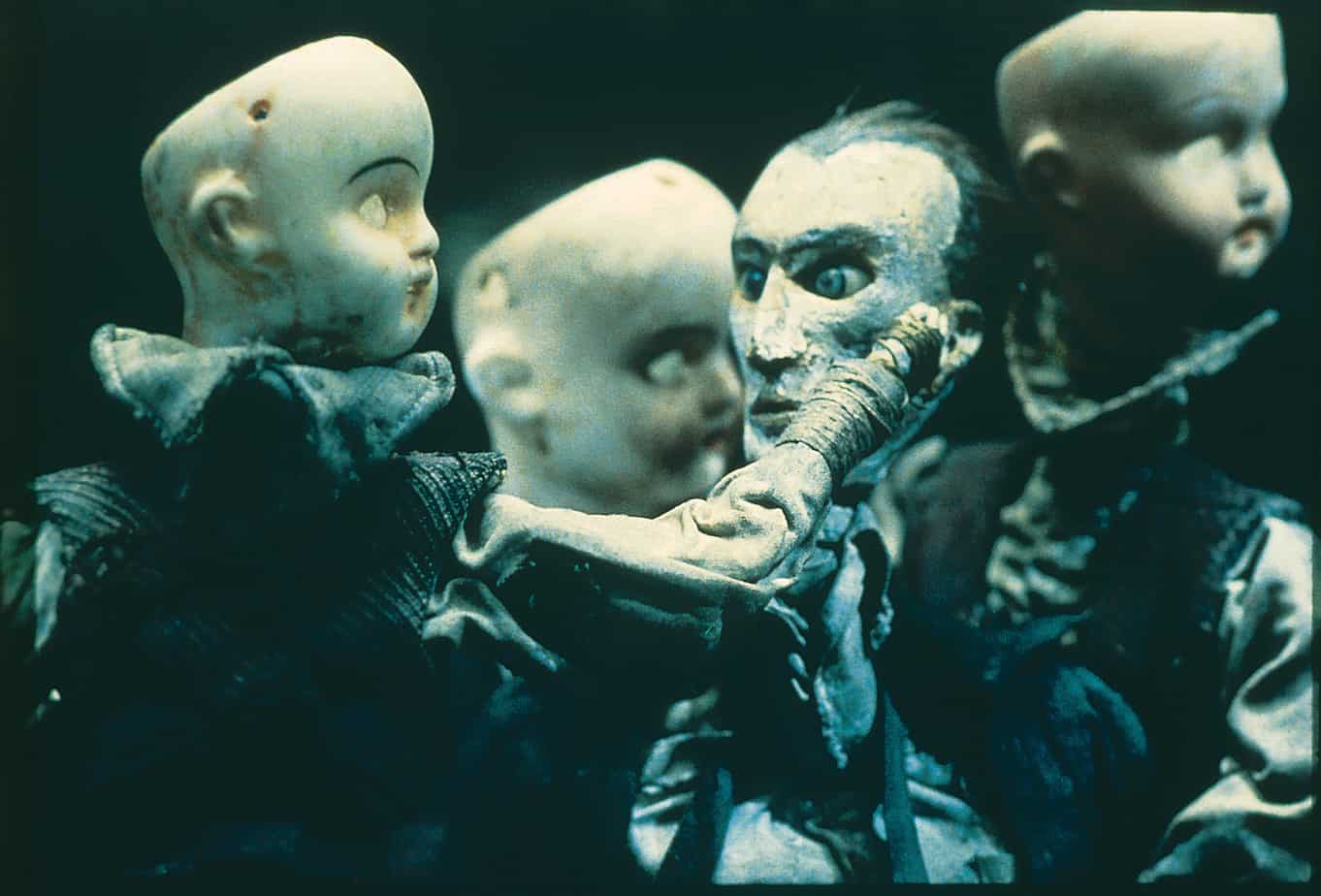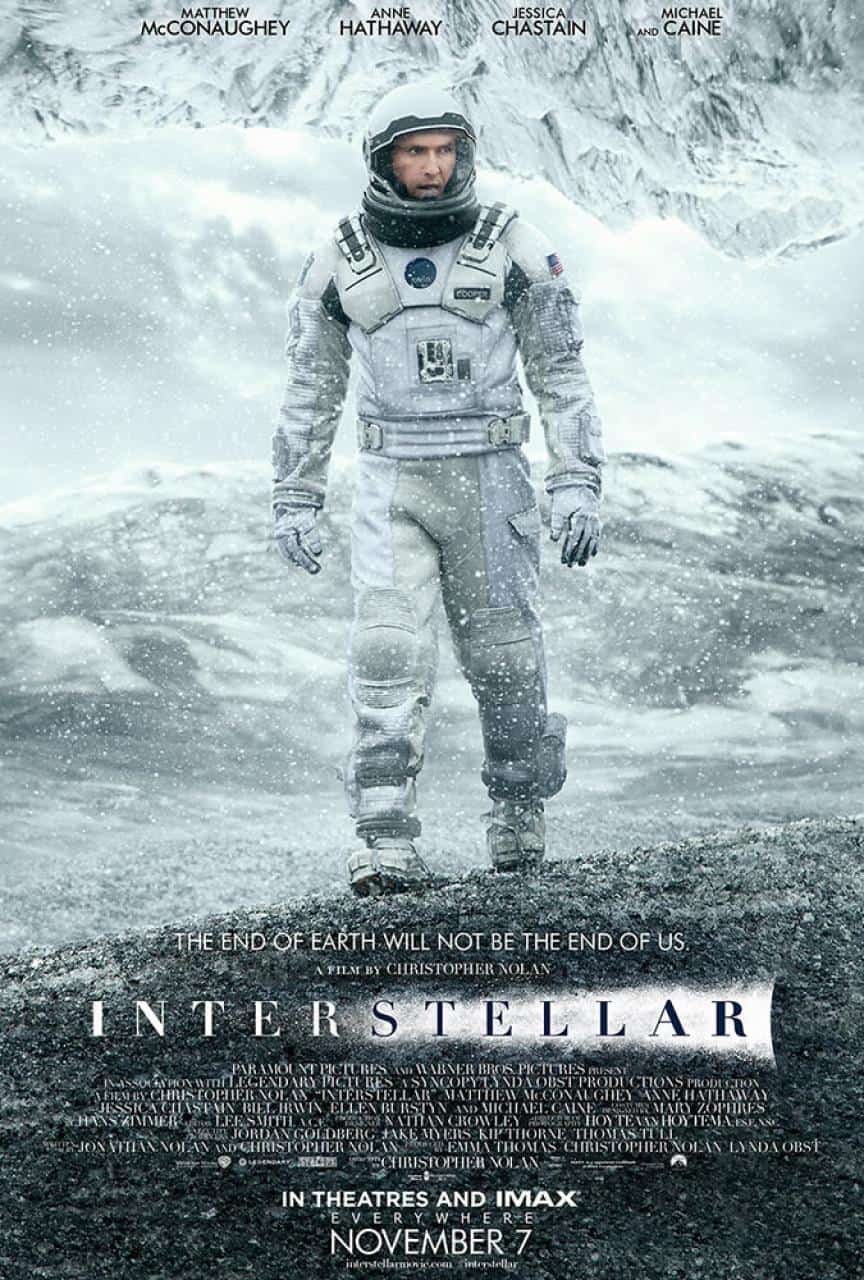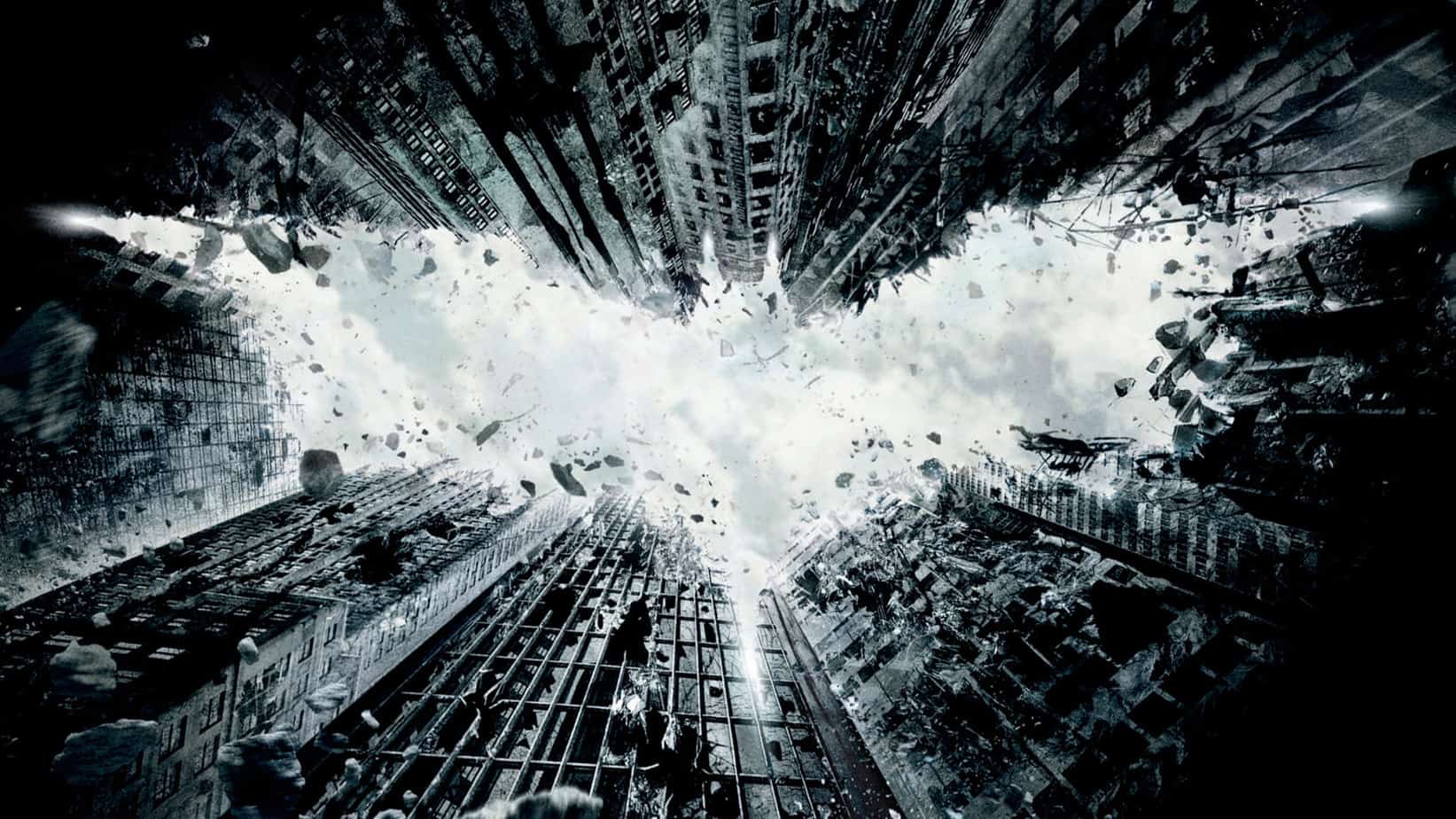
Should you see ‘THE DARK KNIGHT RISES’ in IMAX?
It is almost here. The biggest movie of 2012 will be opening up at the stroke of midnight early Friday morning. Everyone knows that anticipations are high which puts Christopher Nolan in a very unique position. Most of you should know that Nolan is a lover and advocate of film. He doesn’t shoot in any digital format and doesn’t plan to in the near future. In fact, most of his special effects are done in camera as much as possible when an easy alternative of doing the effects digitally is an option. All eyes are on Nolan this weekend as he ends his Batman trilogy with Warner Brothers. Instead of releasing his baby out to the world for all to see, he decided to actively address his passion of film by requesting the film be shown in the 70mm IMAX film format as much as possible. The question that fans of the franchise and normal moviegoers might have is: What are the benefits of the IMAX format?
Most theaters have made the move to 2K to 4K digital projection via DCP (Digital Cinema Package) in the past two years due to studio suggestion as well as the financial costs of some theater exhibitionists. For those of you that aren’t aware, DCP is what some say in the industry as the best way to see any film. Why? Quite simply, it might be the “purest” form to see a film. In order for me to explain this belief, I will need to explain the behind-the-scenes process of film projection.
To explain the film attribute, I will go over how a film is put together once it is received by a studio. Up until the late 1980’s, a majority of films were shown on reel-to-reel projection. If you have seen the film Fight Club, this might sound a little familiar. 35mm film prints don’t come all pieced together as one film, they come in multiple reels, essentially 15 to 20 minute sections of the film. I have included a picture of the print of Nightmare we showed at Late Nite Grindhouse last year for reference. Nightmare is a 5 reel film. So it has five 15-20 minute sections of the film on each reel.
When using reel-to-reel projection, two projectors would essentially sit side by side and one reel would play on one projector while the next reel would be queued up on the next projector. The projectionist has to switch from one projector to the other at the correct time. You might ask yourself, how does the projectionist know when to switch one projector off and the other on? This was done due to a cue mark or a “cigarette burn” printed on the film to alert the projectionist on the exact moment to changeover.
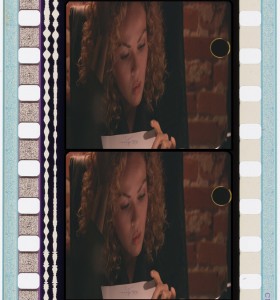
From Wikipedia
The projectionist usually would have sound cues to let them know a changeover was coming via any numerous systems that they could devise, that way the projectionist wouldn’t have to watch the whole film. They could actually work on stuff for 10 minutes at a time. After reel-to-reel, there was a system that was devised called a platter system. Now, a big silver platter could house a whole film by simply taping the reels together to make it one cohesive film print running through one projector. Run from the center out, the film could be put on a platter and run for the duration of the film without really any projectionist involvement. This was the start of automation and what some consider the start of the demise of film. With the benefit of these platter systems, you could have multiplexes built with one projectionist starting more than one film without running back and forth to worry about the change over. They could casually walk through the multiple films showing and make sure that all the hardware was working. When this automation process was introduced, projectionists could literally start a film and walk away from the projector to start the next film and once all the films have started, they would have at least an hour (in a multiplex setting with 5-minute intervals between different movie start times) where they could work on projects or do whatever they wanted.
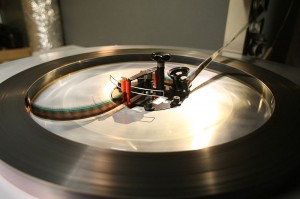
From Wikipedia
The downfalls of platter projection lie within the actual platter system. The film would go through the “brain” which is that center piece you see the film going through in the middle of the circle of 35mm film in the picture above. Film could get static cling and instead of one strip of film going through, two strips could get stuck to each other which would be thicker than the norm and result in a “brain wrap”. A “brain wrap” would result the film getting stuck in the projector and burn – which is an amazing thing to see during a presentation on the big screen until you realize that you will be waiting for sometime for your film to start back up. If a “brain wrap” happened, depending on how bad it was, usually projectionists were given 10-20 minutes to try to resolve the problem before the screening is cancelled. Projectionists would focus on fixing the film while the managers would focus on the customer relations. I can tell you that in the times I experienced “brain wraps” in my projectionist days, if I didn’t know about it within 30 seconds from it happening, more than likely that screening wasn’t being salvaged as we has to manually unwrap the film. In the hands of lesser projectionists or even theater managers tending to prints while the main projectionist worried about other films starting on time, film got dropped to the floor in trying to unwrap it. This makes the film subject to dust & scratches way more easily. Because of this and the costs of studios striking up prints for mass distribution (which I was always told costs about $1000 a print back in my projection days), some other way of presenting these films was bound to come.
When it comes down to digital projection, I will admit I’m not as savvy as I never worked with it. However, I know a few projectionists to understand that the process is simplified and doesn’t really rely on a projectionist’s knowledge of film too much. Hard drives are sent to the theaters and the studio will give them a digital key to unlock the film for exhibition. This gives the studio’s more control as well as to who is seeing their movies. Big blockbusters like The Dark Knight Rises back in the film days could be screened as soon as the projectionists received the film cans – which could either be the Thursday night before it opened or earlier depending if that theater was the host of an advance screening for public or press.
The Dark Knight Rises is a film that has a large majority of it filmed using IMAX film cameras. This is a format that Christopher Nolan used on The Dark Knight and loved the scope it gave. With Nolan being an advocate of film and the fact that his last two films, The Dark Knight and Inception, have grossed over $2 billion dollars collectively worldwide (based off figures from Box Office Mojo) this makes Christopher Nolan a man to listen to for Warner Brothers. Nolan decided that when the prologue of The Dark Knight Rises would be shown in December, much like The Dark Knight prologue was shown with I Am Legend, that it would only be shown in theaters that were the true 70mm IMAX film format unlike The Dark Knight prologue that showed in the majority of IMAX theaters regardless if they were digital or not. This did serve as a “warning” or a clue that some IMAX theaters might need to “downgrade” to the film format if they wanted to show The Dark Knight Rises in IMAX. While this was happening, the internet was buzzing about True IMAX theaters and post-converted IMAX auditoriums in multiplexes. I won’t even open that can of worms for the sake of length but if you want to read up on it, there is a great article on /Film about it.
Here in St. Louis, I reached out to Wehrenberg Theatres who is one of 100 theaters in the United States showing a true 70mm IMAX Film Presentation of The Dark Knight Rises at their Ronnie’s 20 Cine. Warner Brothers asked Wehrenberg to be a partner in showing the 70mm IMAX presentation of the film. Their auditorium was retrofitted back in 2005 for the IMAX format, more specifically the IMAX MPX system. Wehrenberg’s Kelly Hoskins stated “At our expense we put back in the IMAX film projector, even though we are 100% digital, so that we can show it in the fashion that the filmmakers wanted it to be shown.” I have also been informed that the St. Louis Science Center will be showing the film in the 70mm IMAX film format at their OMNIMAX dome. Keep in mind though that while the SLCC will be showing the film in the IMAX film format, their screen is not a traditional theater screen and their image may be a bit distorted due to the dome-curvature of the screen it is presented on. I tried reaching out to a press contact for SLCC before publishing the article but I received no answer. The St. Louis Science Center usually shows 45 minute educational IMAX films, so more than likely a special platter was designed for them in order to show Nolan’s 164 minute film. As reference, there is a video that was posted on YouTube showing Jersey City’s Liberty Science Center preparing for the film. They have a similar set up to the SLCC so I would recommend watching the video.
[youtube id=”Wm2vIaD3GYQ” width=”600″ height=”350″]
It is obvious that Christopher Nolan and Warner Brothers wants you to see the film in the 70mm IMAX film format. The question is if it is in the best interest for you to see it in that format. 35mm film holds a higher resolution than any digital presentation out there today. The DCP format doesn’t even come close to the resolution of regular 35mm film and the 70mm IMAX film is double the resolution of 35mm. The majority, if not all, of the midnight 70mm film IMAX shows have been sold out. Some have been sold out as of last month. If you are really wanting to see the film in the IMAX format, I would recommend seeing it in 70mm IMAX film and not digital. In the case of Wehrenberg, they have been advertising that they are showing a 70mm IMAX print on their ticket ordering page. If you don’t see your local IMAX advertising if it is 70mm film, more than likely it is not as it sounds like this wasn’t something that was paid for by Warner Brothers but was a choice given to those IMAX theaters that had film projection installed at one point of time. You can find a full list of 70mm IMAX presentations here.
The ultimate question, which is the title of this post, is should you see The Dark Knight Rises in IMAX. Having projectionists break the norm from their digital age of projection by showing The Dark Knight Rises in a film format, especially 70mm IMAX – which is a rarer format than 35mm – some projectionists might not be prepared for it. Showing The Dark Knight Rises in 70mm film is a risk for the theaters that are doing it because not only does the prints cost more but with such a high-profile film, they will want to make sure the projectionists that are showing the film are trained and have experience in the 70mm IMAX film format. However, even the best projectionist can experience a “brain wrap” and because of the larger format and the fact that you have a heavier print than the normal 35mm print, this risk is only magnified more. Also, keep in mind that those “brain wraps” that I mention usually only happen during the film’s first run. I hope that most theaters will do a test run before screening the film before an audience. Otherwise, you could have a lot of customers upset at that midnight screening. On the plus side, this film projection gives more of a true job to the projectionists – which some have been laid off due to the digital age.
The Dark Knight Rises might be one of your last chances to see a film in the 70mm IMAX format especially if you are not near a major city. I would highly recommend catching the movie at a theater showing the 70mm IMAX film format because I’m a advocate of film as it shows the movie in the best possible presentation possible. Some people feel differently as it is a physical format that can have cosmetic marks and imperfections. Film is magic and it is something that cannot be duplicated at home and this presentation might be its last breath.
The Dark Knight Rises opens on Friday, July 20th. It will be available in 35mm, DCP, Digital IMAX and 70mm film IMAX formats.


